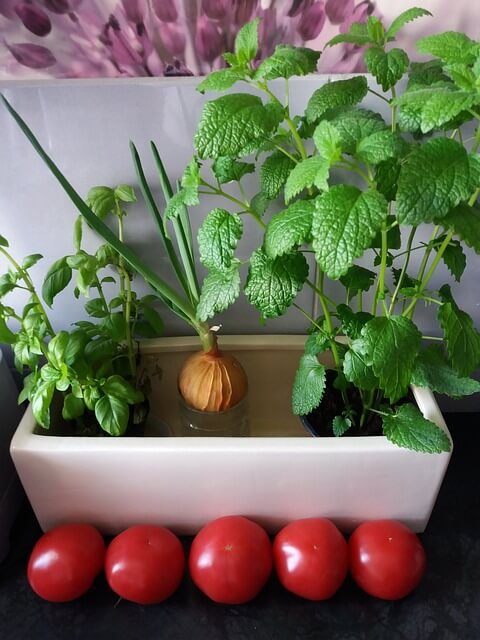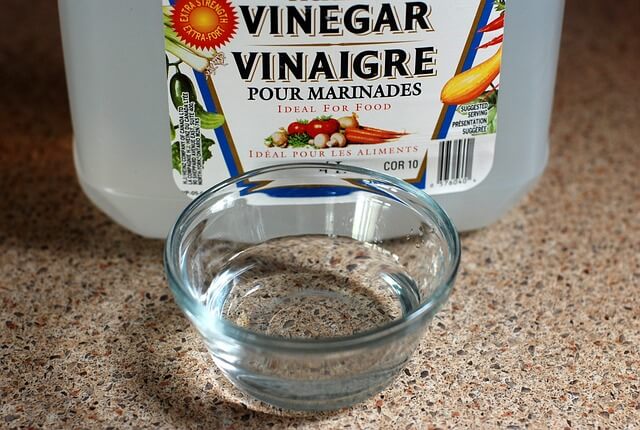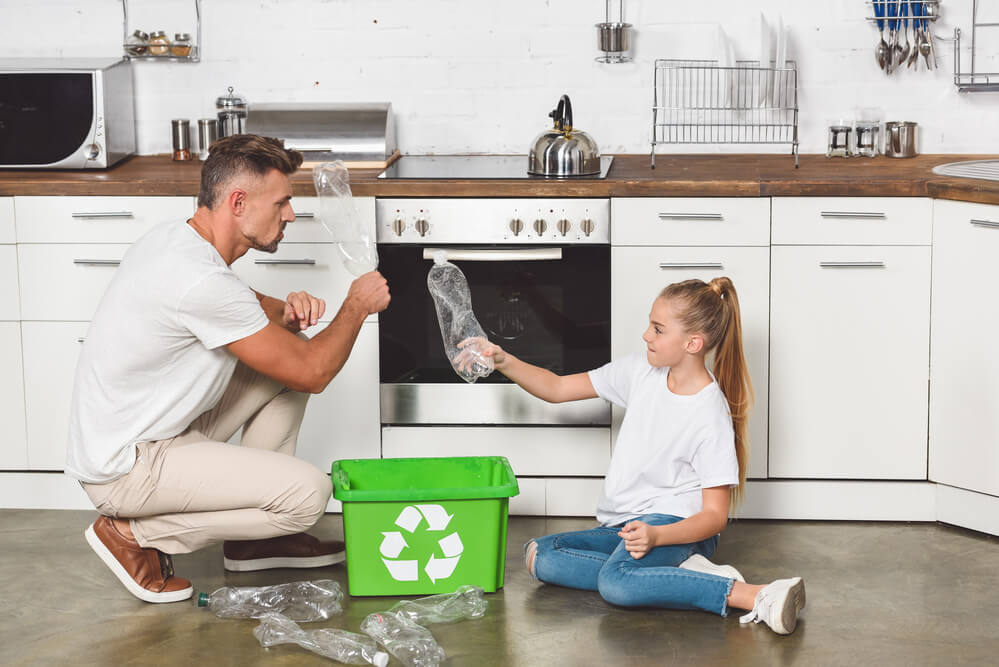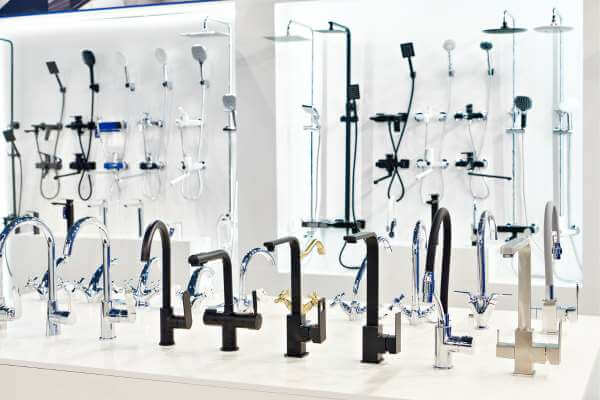The kitchen is one of the most important rooms in your home, where you prepare and enjoy your meals, entertain your guests, and spend quality time with your family. But did you know that your kitchen can also have a significant impact on the environment? From the materials you use to the appliances you choose, every aspect of your kitchen design can affect your carbon footprint and your energy and water consumption. That’s why it’s important to create a kitchen that is not only functional and beautiful, but also eco-friendly and sustainable. In this article, I will share with you 10 eco kitchen ideas. My ideas will help you design a green kitchen that is good for you and the planet. Whether you are planning a new kitchen or remodeling an existing one, these ideas will inspire you to make smart choices. Let’s get started!
10 Eco Kitchen Ideas
If you want to create a kitchen that is also eco-friendly, you might be wondering where to start. There are many ways to design a sustainable kitchen that will reduce your environmental impact and save you money. Here are 10 eco kitchen ideas to inspire you:
1. Choose cabinets made from sustainable or recycled materials
Look for cabinets made from FSC-certified wood, meaning they come from responsibly managed forests that protect biodiversity and local communities. Alternatively, you can opt for cabinets made from recycled materials, such as reclaimed wood, metal, or plastic. You can also buy second-hand cabinets and give them a new lease of life with a fresh coat of paint or new hardware.
2. Use energy-efficient appliances and lighting
Appliances and lighting account for a large portion of your kitchen’s energy consumption, so choosing energy-efficient models can make a big difference. Look for appliances that have an Energy Star label, which means they meet strict standards for energy efficiency and performance. You can also switch to LED bulbs. LED bulbs use up to 90% less energy than incandescent bulbs and last much longer.
3. Install a water-saving faucet and dishwasher
Water is another precious resource that you can conserve in your kitchen. A water-saving faucet can reduce your water flow by up to 50%, while still providing enough pressure for washing dishes and rinsing produce. A water-efficient dishwasher can also save you water and energy by using less hot water and detergent per cycle. Look for models that have a WaterSense label, which means they meet EPA standards for water efficiency and performance.
4. Choose countertops made from natural or recycled materials
Countertops are another element of your kitchen that can have an environmental impact, depending on the material you choose. Natural materials, such as wood, stone, or bamboo, can add warmth and character to your kitchen, while also being durable and biodegradable. Recycled materials, such as glass, paper, or concrete, can also create unique and eco-friendly countertops that divert waste from landfills.
5. Use low-VOC paints and finishes
VOCs (volatile organic compounds) are chemicals that are emitted from paints, finishes, adhesives, and other products that can harm your indoor air quality and health. To avoid this, choose paints and finishes that are low-VOC or VOC-free. It means they have minimal or no harmful emissions. You can also look for natural or plant-based paints and finishes. Those paints are made from renewable resources and have no synthetic additives.
6. Incorporate plants and herbs into your kitchen

Plants and herbs can add life and color to your kitchen, while also improving your indoor air quality and providing you with fresh ingredients for cooking. You can grow your own herbs in pots on your windowsill or countertop, or create a vertical garden on your wall with hanging baskets or shelves. You can also use plants as natural air purifiers by choosing species that can filter out toxins and pollutants from the air, such as spider plants, snake plants, or peace lilies.
7. Use natural or organic fabrics for your curtains and towels
Fabrics are another source of VOCs in your kitchen, especially if they are treated with chemicals such as formaldehyde or flame retardants. To avoid this, choose fabrics that are natural or organic, such as cotton, linen, hemp, or bamboo, which are grown without pesticides or synthetic fertilizers. You can also look for fabrics that are dyed with natural or vegetable-based dyes that are non-toxic and biodegradable.
8. Use eco-friendly cleaning products and utensils

Cleaning products and utensils can also have an environmental impact, depending on the ingredients and materials they contain. Many conventional cleaning products contain harsh chemicals that can pollute the waterways and harm the wildlife. To avoid this, choose cleaning products that are eco-friendly, biodegradable, and plant-based, such as vinegar, baking soda, lemon juice, or castile soap. You can also make your own cleaning products with simple ingredients from your pantry. For utensils, choose ones that are made from natural or recycled materials, such as wood, bamboo, metal, or silicone, which are durable and easy to clean.
9. Use reusable or compostable packaging and containers
Packaging and containers are another source of waste in your kitchen, especially if they are made from plastic or other non-biodegradable materials. To reduce this, choose packaging and containers that are reusable or compostable, such as glass jars, metal tins, cloth bags, or paper boxes. You can also buy in bulk or from local farmers’ markets to avoid unnecessary packaging. For food scraps, you can compost them in your backyard or in a worm bin to create natural fertilizer for your plants.
10. Use renewable or recycled flooring
Flooring is another element of your kitchen that can have an environmental impact, depending on the material you choose. Renewable materials, such as cork, linoleum, or bamboo, can create eco-friendly flooring that is durable, comfortable, and easy to maintain. Cork and bamboo are harvested from renewable sources that can regrow quickly, while linoleum is made from natural ingredients such as linseed oil, wood flour, and resin. Recycled materials, such as reclaimed wood, rubber, or tile, can also create unique and eco-friendly flooring that divert waste from landfills.
FAQ
What is eco-friendly kitchen?
Eco-friendly kitchen has an environmentally friendly features. Embrace a low-flow faucet and dishwasher, paired with energy-efficient appliances that consume minimal power to cook meals and preserve leftovers.
What is eco-friendly material?
Eco-friendly items and materials are characterized by their minimal environmental impact. These products embody the principles of green living and are manufactured using sustainable methods that minimize resource consumption. By choosing eco-friendly products, you contribute to the well-being of the planet, actively supporting practices that preserve and protect our environment rather than causing harm.
What is the difference between green and eco-friendly?
The concept of going green encompasses a broad range of environmentally conscious practices, extending beyond fashion and construction to encompass a global movement. Being eco-friendly implies that a product, practice, or activity is designed in a way that minimizes harm to the environment. Sustainability, on the other hand, focuses on ensuring that our present actions do not deplete valuable resources for future generations, aiming for long-term balance and preservation. By adopting eco-friendly and sustainable practices, we actively contribute to a healthier and more sustainable future for our planet.
Conclusion
These are some of the eco kitchen ideas that you can use to create a sustainable space that is good for you and the planet. By choosing eco-friendly materials, appliances, lighting, and accessories, you can reduce your environmental impact and save money in the long run. You can also add your own personal touches and style to make your kitchen a cozy and inviting place to cook and enjoy.


 Hi, my name is Debra Klein and I love modern kitchen designs! As a product reviewer, it’s my mission to help homeowners choose the right modern kitchen accessories for their homes. I want to give them the best solution possible so they can make the best decision for their needs. Thanks for reading!
Hi, my name is Debra Klein and I love modern kitchen designs! As a product reviewer, it’s my mission to help homeowners choose the right modern kitchen accessories for their homes. I want to give them the best solution possible so they can make the best decision for their needs. Thanks for reading!




